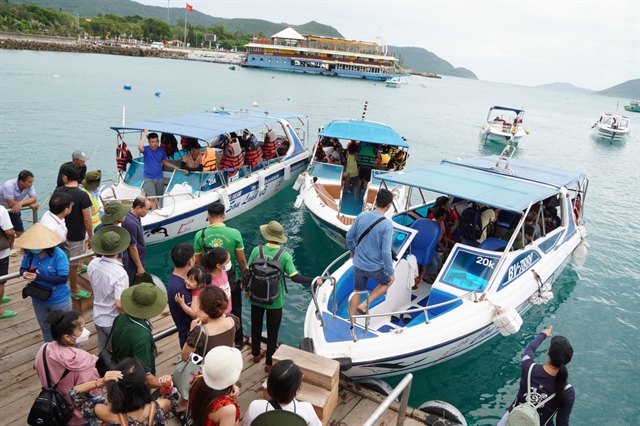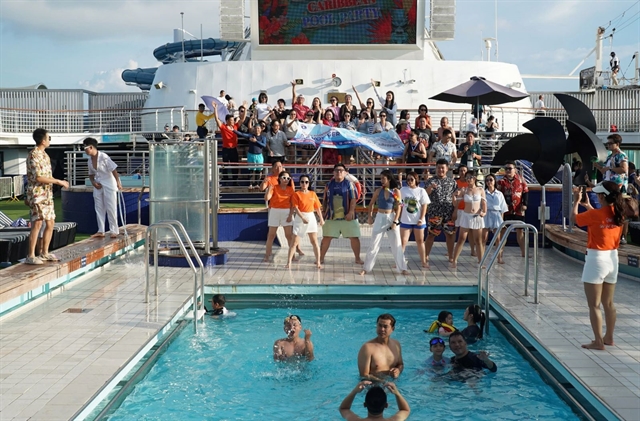Weather:
- Ha Noi 30oC
- Da Nang 31oC
- Ho Chi Minh 31oC

HCM CITY - Following its merger with Bình Dương and Bà Rịa–Vũng Tàu, HCM City is facing a major opportunity to restructure and develop its tourism industry in a more comprehensive direction, expanding travel experiences and enhancing competitiveness.
After the merger, HCM City has undergone not only geographical changes but also a transformation in mindset in the tourism development space.
Many tourism businesses believe the city should strengthen regional linkages and expand inter-provincial tour offerings to grow the industry.
A representative of Bắc Trung Nam Bản Việt Travel Company suggested that post-merger, HCM City should organise more domestic and international famtrips (familiarisation trips) to give small and medium enterprises (SMEs) access to practical insights and successful tourism models.
In addition, tax support policies should be extended to SMEs to help motivate growth.
This is a necessary solution, particularly during the transitional period of administrative restructuring, to help tourism businesses cope with high initial costs.
From a regulatory perspective, a representative from the Travel Management Department (under the HCM City Department of Tourism) affirmed that with a broader administrative area, famtrips are a crucial tool not only to refine tourism products but also to promote new tour development.
The city is actively working with other localities across the country, especially newly merged regions like Vũng Tàu and Bình Dương, to organise site surveys, connect businesses, and learn from international tourism models in order to improve service quality and competitiveness.
With the two-tier local government model implemented from July 1, many businesses have quickly identified potential in emerging areas such as Côn Đảo, Cần Giờ, and the suburban fringes of the city to develop signature tourism products.
Ngô Tuấn Tú, director of Amadive Travel, noted that Côn Đảo remains a standout destination that attracts both domestic and international visitors.
However, it faces several issues, including seasonal operation, inflated prices due to ticket and room speculation, a shortage of qualified tour guides, and a lack of diverse tourism activities, especially in the evening.
“To ensure sustainable development, Côn Đảo tourism needs a clear strategy to diversify products, regulate pricing, and improve workforce quality,” Tú stressed.
Meanwhile, Nguyễn Thị Thùy Nga, Sales and Marketing director of Lan Rừng Resort, shared that her 4-star property with over 400 rooms is currently operating at high occupancy rates, driven by both domestic and inbound travelers.
Still, she sees a need for increased promotion, particularly for international markets.
“Phước Hải and Long Hải offer beautiful beaches, rich ecosystems, affordable and delicious seafood, and proximity to attractions like Minh Đạm Mountain and Khỉ Pagoda. They are well-suited for resort tourism that blends culture and spirituality,” Nga said.
“In the long run, we need to enhance transportation links to reduce travel time from central HCM City to these beaches and improve connectivity between destinations and tour operators. Local service providers also need to upgrade service quality to keep visitors staying longer,” she added.

A strategic tourism triangle
According to Huỳnh Phan Phương Hoàng, deputy CEO of Vietravel, the merger has created a tourism linkage zone rich in resources, blending urban development, industry, coastal and forest ecosystems, and traditional culture.
With administrative borders no longer limiting its reach, HCM City now has the opportunity to design multi-destination combo tours lasting two to four days, ideal for MICE travelers, corporate clients, or short-term international visitors.
Hoàng believes HCM City can push forward with new tourism models that several companies are proposing.
These include wellness tourism near urban areas for businesspeople, beach–mountain–forest retreats connected by highways, eco-tourism in Cần Giờ and Côn Đảo and luxury stays in Long Hải.
Thanks to its compact travel distances, strong transport infrastructure, and dense population, HCM City holds significant advantages for developing such models.
Currently, the city is nearing its goal of becoming Việt Nam’s leading tourism hub.
From HCM City, visitors can easily branch out to a variety of destinations, enhancing the depth and diversity of their travel experience.
This shift also contributes to repositioning the city’s brand, not only as a cultural and historical destination but also as a centre for events, exhibitions, wellness, and nature exploration.
Từ Quý Thành, director of Liên Bang Travel, said the merger is a catalyst that has “warmed up the tourism market.”
With administrative barriers removed, businesses can more easily connect to expand product offerings, link destinations, and share logistics, staffing, and marketing resources, generating strong momentum for the entire sector.
Discussing post-merger prospects, Lê Trương Hiền Hòa, deputy director of the HCM City Department of Tourism, said the city is shaping into a “regional mega tourism metropolis” based on a strategic development triangle, such as smart urban tourism, island and beach resort tourism, and creative industrial tourism.
This is an opportunity to diversify products, extend visitor stays, increase per capita spending, and lower connection costs through infrastructure such as expressways, metro lines, seaports, and Long Thành International Airport.
According to Hòa, HCM City will focus on coordinating and hosting major cultural events and promoting smart tourism applications, while Bình Dương will emphasise industrial tourism products, and Bà Rịa–Vũng Tàu will continue leveraging its coastal resort strengths.
This synergy will help position HCM City's tourism as rich, distinctive, and more attractive to long-stay visitors.
Looking ahead, the city will continue to stimulate demand, improve regional tourism products, develop high-quality human resources, and enhance the business and investment environment.
Key short- and mid-term strategies include famtrips, tourism fairs, international market promotion, and enterprise support. - VNS

